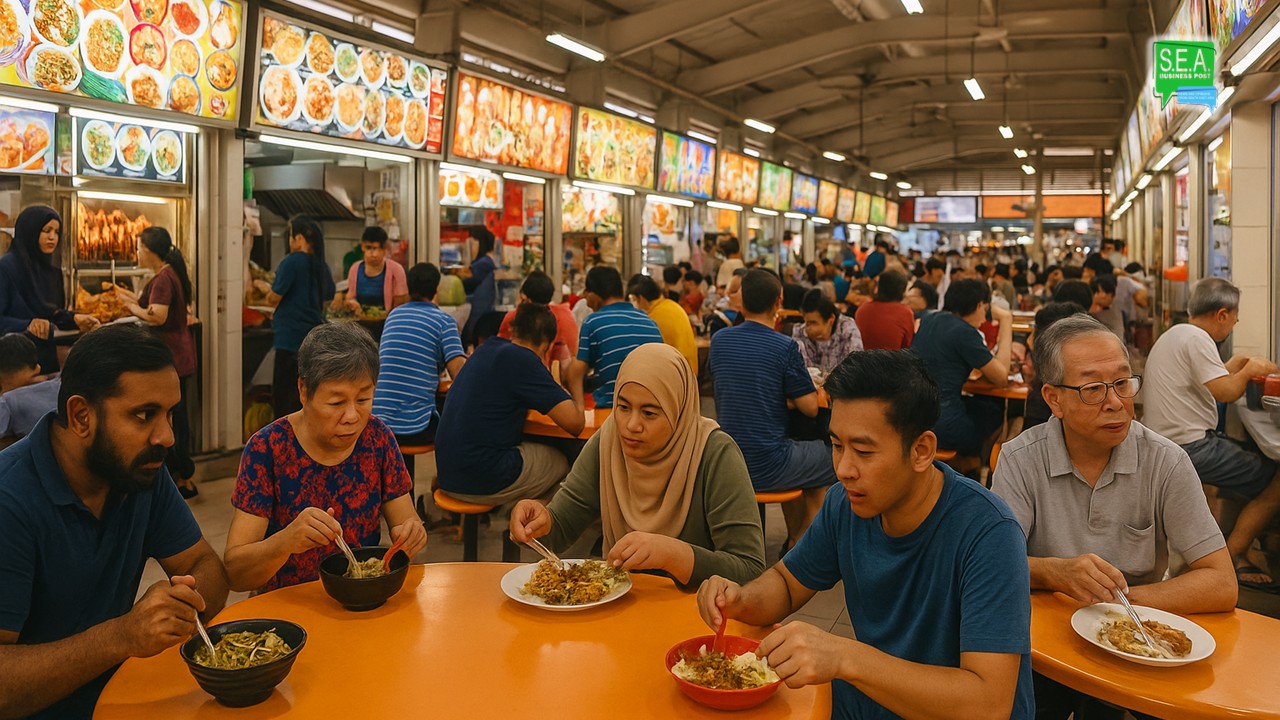
Singapore Hawker Culture Controversy
Singapore’s hawker culture, from our beloved carrot cake to nasi lemak, is more than just food. Recognized by UNESCO, it reflects our multicultural roots and serves as a cornerstone of daily life. Hawker centers embody affordability, innovation, and tradition, making them a vital part of the nation’s identity. That is why the growing controversies surrounding the Social Enterprise Hawker Centre (SEHC) model have become so significant.
KF Seetoh Raises Hawker Concerns
KF Seetoh, founder of Makansutra and a longtime advocate of Singapore’s hawker heritage, has highlighted issues with SEHC practices. His criticism began with Canopy’s SEHC at Bukit Canberra, pointing out problematic clauses requiring hawkers to provide charity meals, pay storage fees, and accept demerit penalties, despite claims these rules were not strictly enforced. At Timbre Group’s Yishun Park Hawker Centre (YPHC), Seetoh highlighted even more pressing issues, including a 15% gross turnover rent (capped at S$2,550), a high base rent of S$1,750, S$900 in service fees, exclusive supplier mandates, enforced POS systems, and comprehensive CCTV surveillance. He also raised concerns on hawkers already meagre profits.
SEHC Operators Defend Their Model
Operators like Timbre Group and Canopy argue that the SEHC model offers flexibility and community benefits. They claim that lower sales automatically reduce rental obligations and that surplus funds are channeled into marketing, programming, and technology upgrades. Canopy also noted that certain charity clauses are being phased out. Timbre defended CCTV installations, stating they were necessary to manage noise complaints and operational efficiency, and emphasized that fines are only imposed after warnings.
NEA’s Perspective and Ministerial Statements
Minister Grace Fu explained that SEHC rentals average around S$1,700 per stall, compared to S$1,625 in traditional NEA-run hawker centers. NEA maintains that SEHCs were introduced to modernize operations and improve services without drastically increasing rents. However, questions remain about whether SEHC rental collection and usage are transparent enough, especially given Timbre’s claims that rental revenues are reinvested into technology and marketing.
Nasi Lemak Ayam Taliwang Case
The Nasi Lemak Ayam Taliwang stall in Timbre Group’s YPHC drew attention after its owners, who run 31 outlets island-wide, faced warnings for not being physically present at the stall. The stall leveraged technology and staff delegation to maintain quality, but NEA cited tenancy obligations requiring personal presence to prevent subletting. Minister Koh Poh Koon later stated that hawkers unwilling to comply with physical presence rules could appoint a joint operator or surrender their stall for reassignment. This case highlighted an underlying contradiction: SEHCs claim to promote innovation and technology but penalize hawkers who embrace these very tools.
Deeper Analysis
Timbre Group, one of the SEHC operators, ran its own pizza stall within YPHC. This raised concerns about potential conflicts of interest when an operator competes directly with its tenants. At the same time, questions remain about how much SEHC rental revenues go.
Additionally, the SEHC model appears better suited for high-margin food concepts rather than traditional low-cost dishes like mee rebus or carrot cake. This creates an imbalance where heritage food vendors face greater financial strain compared to trendy, higher-priced offerings.
Recommendations and The Way Forward
For SEHC operators, simplifying rental terms, increasing transparency on revenue usage will help rebuild trust. Avoiding conflicts of interest, such as operating stalls within their own centers, is essential.
NEA should ensure fair competition, consider returning to traditional open bidding models, and enable hawkers to form cooperatives or associations to collectively manage their centers. These associations could hire managing agents, much like MCSTs in condominiums, to handle marketing and operational needs while keeping hawkers in control.
Singapore’s hawker culture thrives on diversity, affordability, and innovation. To preserve this heritage, both SEHCs and NEA must prioritize the interests of hawkers, ensuring that modernization supports—not suppresses—the very culture it seeks to protect.















